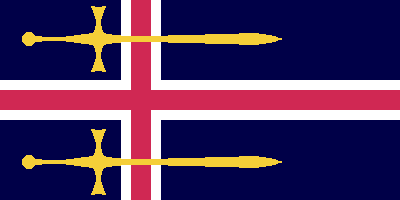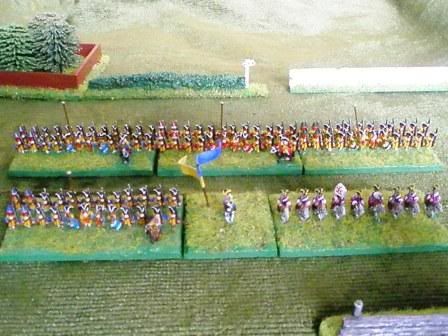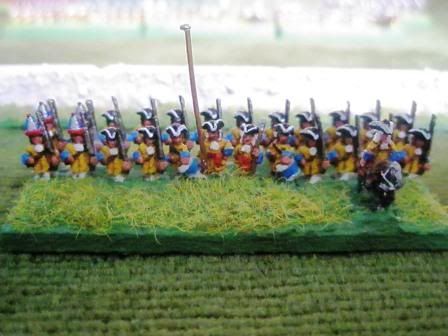
The flag of Hassland is called the Hassvlag. The Hassvlag has dimensions 1:2, with the cross having a ratio of 3:1:6 with the long edge, and 2:1:2 with the short edge. The inner cherry cross is half the width of the whole (white) cross.
Officially the colours of the Hassvlag are referred to as midnight blue, and Prince's pink. This colour should not be confused, however, with the facing colour of the Princeguard regiment, which is much lighter in colour.

The royal flag of Hassland has the cross banded with golden bands, and is flown according to protocol wherever the monarch is in residence or visiting.
 There are two variants of the Hass war flag. The first has the Hassvlag defaced with a golden sword running along the horizontal bar of the cross, with the quillions or guard at the level of the vertical.
There are two variants of the Hass war flag. The first has the Hassvlag defaced with a golden sword running along the horizontal bar of the cross, with the quillions or guard at the level of the vertical.
The second form of the Hass war flag has two swords either side of the horizontal arm of the cross, with the guards in the hoist cantons. Whilst the two are used in parallel they are not interchangeable, with tradition or royal ordinance determining usage.
In either form of the war flag, there is no single style of sword used. The closest to a general war flag is that which is flown by the army's general staff, which uses a stylised longsword, as shown. Individual regiments or institutions may use different swords, again governed by tradition, although the device must always be a sword. In particular, colonial regiments generally use local swords in their design.


